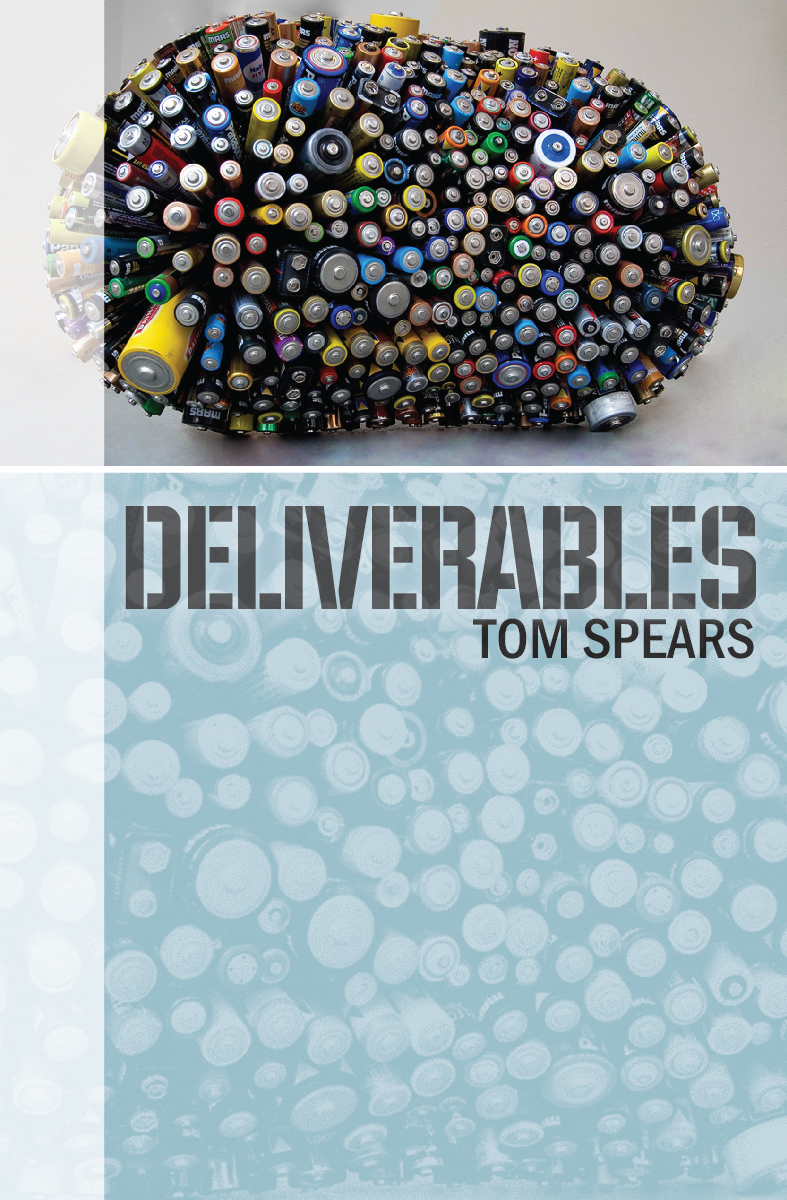Friends, my apologies this post has taken so long to turn out -- lots of time and attention consuming things going on right now. Try to bear with me...
What is meant by “creative and innovative.”
Creativity and innovation are the sparks that drive companies forward. Business as usual results in predictability, stagnation, and ultimate destruction – by nimbler competitors or by an ever-changing environment. And while big ideas certainly have their place in leading companies into the future, I’ve found that the hundreds and thousands of smaller, incremental ideas are really what sweeps the ship along.
Understanding that innovation is a business imperative, many people still labor under the mistaken notion that they have no contribution to make in this area. The mediocre employee will argue that creativity and innovation aren’t in their job description and that defining new direction is the responsibility of those in management – particularly those near the top.
They couldn’t be more wrong.
It is true that senior management owns the development of an overall corporate strategy. But corporate strategy is often little more than the knitting together of a consistent set of ideas, turning them from individual initiatives into an overall direction that is workable for the organization while also being self-reinforcing. Well, good strategy development does contain of a bit more than just that, but the point I’m making is that “developing strategy” typically means picking and choosing among an array of ideas, initiatives, and innovations that all have the potential to drive the business forward – selecting some, rejecting others. So where do those ideas come from?
In my experience, from the people who work in the business each and every day. They are the folks closest to customers, suppliers, and internal problems, and are in the best position to see new and better ways of doing things. The trick is to get those ideas out on the table and to apply work to the best ones.
And quantity does matter. The more concepts, ideas, and innovations that are offered, the more likely senior management is to be able to develop a powerful and executable strategy that ultimately leads to success.
New ideas move businesses.
New is tough. New is often doubted and criticized. New is sometimes rejected out of hand – and not necessarily for good reasons. People love the familiar, the routine, the easy, often abhorring the disruptions and hardships associated with change.
This same dynamic goes on at my house, and possibly at your house, too. When either my wife or I come up with an idea of how to better manage the household it is often rejected out of hand. For example, I recently suggested that we “unbunk” the bunk beds in the bedroom my two sons share, the idea being to make it easier to change the sheets. The initial reaction went beyond “no” to “hell no.” But over time the concept grew on my wife – particularly following a recent rash of bed-wetting by the youngest. Now the beds are both at floor level, and dealing with daily sheet laundering is quite a bit easier.
I wish I could say I had the same success with my suggestion of what to do with two overly-stuffed toy boxes!
My bedroom rearrangement example is not terribly different from the normal ebb and flow of a business. Circumstances altered, and a new idea (and not even a terribly clever or earthshattering one) helped us manage through the change. The same kind of forces are altering the business model in most industries, and an attitude that says “this is the way we’ve always done it” is likely to get you into trouble. New ways of seeing the business, executing daily tasks, and thinking about the future are the fuel needed to succeed in a evolving world. And the adaptations don’t have to be gigantic, world-changing innovations (although those are nice!) to be successful. Innovation can be as simple as seeing a way to shave 5 seconds off a repetitive task, or error-proofing a process, or coming up with a different way of thinking about a product or service. It can even be something that is borrowed from another company or industry, or even directly copied from someone else!
This is one of the reasons new employees are often fawned over for a period of time after they are hired – the boss is busy picking their brain, looking for new perspectives or different ways of running the business.
My best boss was a wizard at coming up with all kinds of new insights and ideas. He once told me that he aimed to introduce at least one creative idea every time he met with his boss, and given the number of improvements credited to him, he must have been largely successful. And trust me, this guy was well loved and well taken care of by his supervisor.
Rarely is the idea enough.
I hope I’ve convinced you, in your quest to be a Great Employee, to start churning out new concepts and proposals on a grand scale. Assuming that’s true, I should now describe the second part of being a successful innovator, because just generating the “idea” isn’t enough. Sure, there is value in throwing out ideas and potential innovations. I used to do this all the time, even when I knew the odds were strongly against anyone taking them seriously. I’ve always believed “throw-away” ideas can work as brain teasers – they get the creative juices flowing and can result in big ideas that get eveyone excited. In fact, one of the biggest projects ever undertaken under my management started off as one of these “throw-away” concepts and ended up with an entirely new concept of how to manufacture a large range of our products.
When you have a good idea, big or small, one that you’re convinced will be of significant value to the company, you are obligated to go beyond simply framing the solution. You have to help handle the implementation, as well.
I recall getting good suggestions from employees all the time. Ideas that would certainly improve their own jobs or the jobs of those working around them. Not earth-shattering, business-reinventing, killer ideas, but the day-to-day stuff that made the company run better. The problem was, most of these employees thought their job ended once they’d spoken. Few of them were willing to step in and put effort into turning their idea into reality, and fewer still would self-start when it came to implementation. Because I had hundreds of these little ideas coming at me each month, I rarely had time to do anything with them, myself. Far too many of these smaller improvements slipped through the cracks. If I’d only been able to convince more people to take the next step…
A poor employee has no ideas. A mediocre employee only offers suggestions. A good employee will take the bull by the horns and press on with the harder work of implementing those innovations that will help the business.
Taking it to the next level.
Great Employees, on the other hand, are adept at figuring out when they have a winning idea, and can rally resources to help them turn those concepts into reality. With a great employee, the boss has a resource she can depend on to put forward creative ideas, develop innovative proposals and, more importantly, move the really good ones down the road. And while great subordinates sometimes lack the juice to convert ideas into completed initiatives all by themselves, they always lighten the load on the boss to the maximum extent possible.
You’ll know you’ve got the right kind of innovation when peers want to be a part of it. I’m not talking about a token effort in order to get their name associated with the project (although that’s a good sign, too), I mean when they are willing to apply time and sweat to get things done. If you’re getting little more than tepid support from those that work around you, chances are you’re applying effort to the wrong thing.
Not all creative ideation has to result in completed projects to be valuable, however. Sometimes an idea will sparks another thought in someone else, one that is truly a game changer. Occasionally, your creative insight will simply result in a different way of thinking about a part of the business and won’t have any immediate, practical impact associated with it – that doesn’t mean it was worthless, just that there may be some latency in its impact. That said, there is no way of getting around the fact that a large number of innovations simply end up dying on the cutting room floor. It’s a harsh fact that not every one of your brain farts is going to be sweet smelling. This is why quantity matters when it comes to innovation – quantity, quality, and the good sense to be able to sift through the chaff to get to the wheat.
Don’t get too attached.
Perhaps it’s the right idea at the wrong time. Or too much of a leap from where the organization currently sits. Or it could just be a stinker, and you can’t see it. For whatever reason, a lot of your creative thoughts will be rejected. If you want to be a Great Employee, you can’t allow those rejections to shut you down. Based on my personal experiences, you’ll need to offer up at least ten failed idea to get one with even a whisper of a chance of being implemented. Maybe more. If you get too attached to all those lost causes, the boss will start to question your judgment and/or demeanor, making him more likely to say “no” to that tenth, winning innovation.
And while the pride of authorship is great to have, recognize that success in business is a team endeavor. It will be the rare instance, indeed, when you can personally conceive of and fully implement an impactful idea . Share the load and share the credit. Generally speaking, the boss’s boss will have a pretty good idea where the innovation came from, particularly if there is a pattern.
Why the boss needs your creativity
As I’ve previously discussed, the condition that characterizes management more than any other is the massive time deficit. Managers are already forced to pick and choose what they can pay attention to, attempting to focus on the significant few while ignoring the trivial many. Given the inherent resouce deficit, the boss already has a tall order just trying to handle day-to-day tasks. Toss in total and complete responsibility for determining new direction, introducing new ideas, and driving implementation, is to concede that innovation will only occur at a snail’s pace.
This is completely counter to what the boss’s superiors are expecting. In order to keep improvements coming, your supervisor has to place highly selective bets on those projects and initiatives that will have the biggest impact for the effort required. Unless she is fortunate enough to have a few subordinates that contribute both new ideas and the horsepower necessary to turn the best of these into reality. Only under these latter circumstance can the boss look like a powerhouse of performance.
And before you start worrying too much about the sharing of credit, in my experience most competent bosses are more than happy to heap praise for successes on the shoulders of their high-performing subordinate – it actually makes the supervisor look doubly good, both by getting a lot done and also by managing to attract and retain a top talent. Exceptions to this rule do exist in weak managers that probably won’t survive in their jobs long term. And don’t sell the slacker-manager’s superiors short – they are probably already well aware of your boss’s shortcomings and are also aware of where the group’s successes are coming from.
What a Great Employee will do
A Great Employee makes it a point to inject creative ideas and innovative thinking into their daily work. A good goal would be to introduce at least one new concept or idea, at least verbally, on a routine basis. The Great Employee can accumulate a substantial number of potential areas of improvement over time and needs to be able to adeptly sift through the possibilities to locate the most promising of ideas. But the innovation task doesn’t stop there. For an employee to truly be characterized as Great, he also has to take all necessary and prudent steps to get the best improvements implemented. This doesn’t mean such work should go on without the boss’s involvement, but the amount of “lifting” the boss is required to do should be kept to a minimum. Lastly, the Great Employee will keep the boss up to speed as the implementation is continues, alerting her if anything unexpected should come up, particularly if it might create political headwinds or somehow threaten other programs or initiatives.
Can you take “creative and innovative” too far?
Balance is important when it comes to introducing innovations. Generate too few ideas, and one appears to be a mindless drone. Too many, particularly without any follow through, and you’ll look like an untethered dreamer, lacking any root in reality. Strike the right balance (which does vary a bit from boss to boss) and you will be an asset your supervisor values greatly.
Challenging the status quo is almost always a good idea, but one needs to be aware of what is in the realm of workable changes and what lies outside of it. There is little point pushing for innovation that the organization will categorically reject, whether justified or not. And there is always a danger of falling in love with your own ideas, a phenomenon one of my bosses referred to as “drinking your own bathwater.” Make sure you don’t get so close to your idea that when it goes down in flames, you go with it.
This last behavior was one I had great difficulty practicing in the real world. In fact, in one particular job on three occasions I proposed acquisitions to my boss that I already knew both he and the board of directors didn’t believe could be successful. Why you might ask? Because I was convinced I was right. I simply wasn’t going to let what I thought was a great idea slip away without a fight. Needless to say, taking this tack did little to endear me to my boss or his superiors.
Conclusion
The introduction of creative and innovative ideas into the business environment is critical to the long term success of most companies, and contrary to popular opinion, it is not the sole responsibility of management. Great Employees are critical sources of innovation and change that drive the company successfully forward. Furthermore, the Great Employee doesn’t just offer up ideas, but also is a prime mover in the implementation of the best of those initiatives, taking as much load off of their boss as is practical. Finally, the Great Employee understands that there needs to be a balance between innovating and implementing and has the ability to separate and focus on those improvements that provide the greatest return for the time spent.














